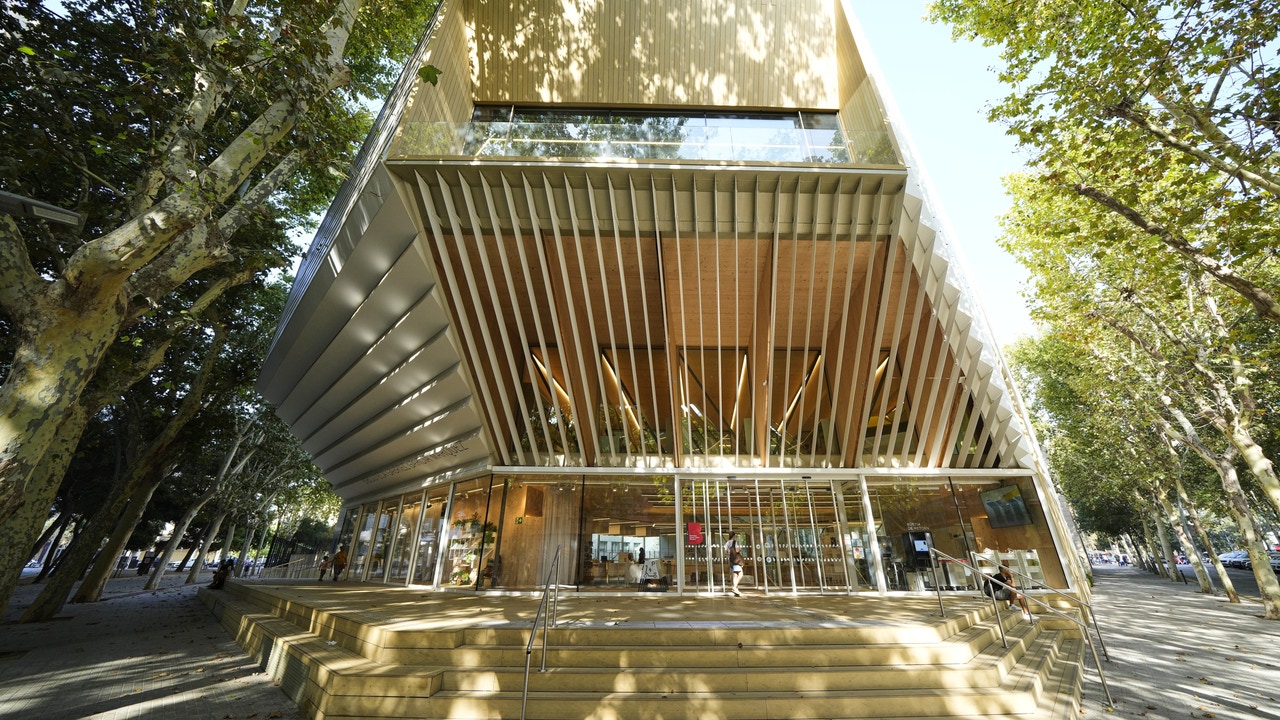The use of wood as a structural element in the construction of buildings entails a series of positive impacts in very different areas of the chain that goes from its production to its use in buildings. Including reducing the carbon footprint of the building.
The production processes of wood in general for construction, specifically that from FSC certified sustainable forests, favor rural development, revitalization of the forestry sector, industrialization and job creation in forest regions, stimulate technological advance and less need for labor. work in the construction phase, are some of them.
Issues that were revealed during the day “In wood, another way of building. The sustainable construction material of the 21st century”, organized by FSC and held recently, one of the organization's actions to give value to the forests certified with its seal and the derived forestry industry.
An objective that makes a lot of sense in a country in which “more than half of the territory is forested area, 37% wooded,” in the words of Elsa Enríquez, deputy director general of Forestry Policy and Fight against Desertification of Miteco. And in which “the number of chain of custody certifications for wood for construction has increased from 153 in 2020 to 188 in 2024”, data provided by Gonzalo Anguita, executive director of FSC Spain.
All benefits
Far from being a material to be taken into account only for building single-family homes or low-rise buildings, wood claims its role in larger works. And, if it is the residential market, the economic aspects of a project are also fundamental.
As is the balance of the carbon footprint for more and more promoters. Sandra Fernández, general director of Lignum Tech, gave the example of a new residential building in Madrid for which her company has supplied the wooden facade structure developed by them “its carbon footprint is 42 kilos of CO2 equivalent per meter square, compared to 400 for a traditional one. Another characteristic is its lightness “it has a weight of 60 kilos per square meter, compared to 350 or 400 for a traditional one and, as it arrives at the site ready for placement, it does not require scaffolding, just a crane. There we have another cost savings to which we can add those of requiring less structure and foundation of the building.
Fernández emphasized that “to democratize the use of wood, the first thing is to give confidence to the developer and the architect of its suitability for use and document that the material complies with all the regulations of the Technical Building Code, from manufacturing to mounting. And modernization provides wood for building with those required characteristics. In addition, he added, digitalization allows us to develop lower cost systems compared to traditional ones, adapt to the exact needs required by a project and meet deadlines.
Fernández also highlighted that “our factory is in the Cuenca mountains, which has pine of exceptional quality. It is completely automated and we can proudly say that among our operators there is a high percentage of women. On the other hand, given the characteristics of the structure, “the installation requires less labor, in a sector in which a very significant shortage of labor is being noticed.”
Warmth and good coexistence
The studio specialized in unique residential architecture and public buildings, mainly libraries, Suma Arquitectura, is responsible for the design of the Gabriel García Márquez public library in Barcelona. A six-story building with an exposed wooden structure, which has received prestigious awards inside and outside of Spain. Among them, the best new public library in the world awarded by the International Federation of Library Associations and Institutions (IFLA), the College of Architects of Madrid and the City of Barcelona. And since the day before yesterday he is one of the seven finalists for the European Union Contemporary Architecture Prize, Mies van der Rohe Awards 2024.
Guillermo Sevillano, co-founder of the Suma Arquitectura studio, said that “wood is of particular interest to us for its technical benefits. In the case of the library, they allow everything to be wood from the foundation slab upwards. But also because it relates very well to the rest of the built environment and because of the warmth it gives to the users of a building. A material about which he remembers “we had barely received training at the university, but that same not knowing pushed us to learn, to understand and stretch its possibilities.”

